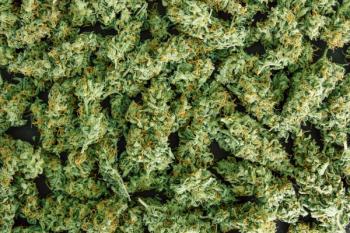
Survey Explores Why Utah Medical Cannabis Patients Turn to Unlicensed Sources
Key Takeaways
- Cost and supply issues were major barriers to accessing licensed medical cannabis, leading to illicit use.
- Participants using illicit cannabis reported lower trust in the medical cannabis program and less reliance on pharmacists.
The exploratory analysis suggest that lower costs and reliable supply could affect reliance on illegal medical cannabis in Utah.
A recently published
The researchers analyzed data from 211 participants who had been enrolled in the state’s medical cannabis program less than six months and who had been diagnosed with chronic pain, post-traumatic stress disorder (PTSD), and/or cancer. The survey asked respondents about mental and physical health, experience in the program, and their access to medical cannabis. To identify influences on MC use, the researchers utilized descriptive analysis, chi-squared analysis, and logistic regression.
Highlighted results include:
- 11.9% of respondents indicated IMC use within the past two weeks
- Those who accessed IMC were 40.5 years old, 58.3% male, 70.8% employed, and 87.5% white
- Cost was the most common barrier to MC, with 79% of participants indicating it as a barrier
- Additionally, 45.8% of respondents indicated consistent supply was a significant reason for IMC use
Additionally, those who reported barriers to MC were more likely to report IMC use, and also reported a lower level of trust in the program, reliance on the program, and less dependence on MC pharmacists. In contrast, participants who used the MC program for information were less likely to use IMC.
“Our findings suggest that barriers related to MC supply and cost may contribute to IMC use, while reliance on state program information appears to protect against this behavior,” the researchers stated. “Additional factors, such as enrollment barriers and public perception may be influential in participants’ decision-making processes.”
The researchers called for further studies to assess how access to more affordable MC and increased information could change IMC use, as well as other related topics including the perceived effectiveness of IMC.
Limitations to the study included the small size of the study, which limits the generalizability of the results, the researchers explained. Furthermore, the cohort was only representative of the population of one state.
Reference
- Reeves, C.; Franks, L.; Kelley, AT.; Incza, M.; Gordon, AJ.; Yu, Z.; Flake, E.; Cochran, G. Understanding motives for illicit medicinal cannabis use: an exploratory analysis in a medical cannabis program. J Cannabis Res 7(48), 2025. DOI:
10.1186/s42238-025-00284-w .
Newsletter
Unlock the latest breakthroughs in cannabis science—subscribe now to get expert insights, research, and industry updates delivered to your inbox.




